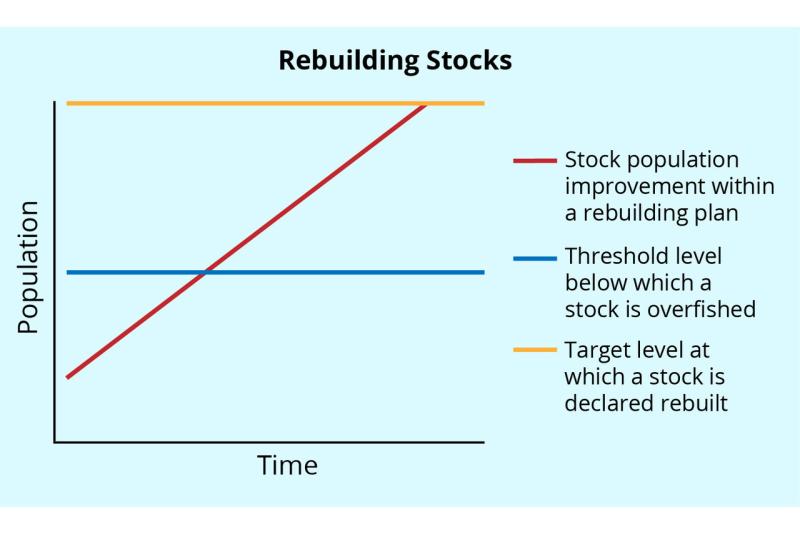We gave you an overview of stock assessment models, but now let's take a closer look at how models work. First, what is a model? A mathematical fish stock assessment model represents the demographics of a harvested fish stock and produces estimates of relevant fishery management factors. A fish stock assessment model incorporates many complex fish-related factors into a graphical representation.
Scientists use the model to graphically display many complex factors as a complete picture. They then use this picture to inform decisions about how to regulate and manage fish populations.
Individual stock assessment modeling packages offer different features—the models available for assessing fish stocks range from simple to complex based on the available data for a given stock. Scientists choose the model best suited for a stock’s life history and data availability and might try multiple models to find the best possible fit.
A Simplified Example of a Fish Stock Assessment Model Using Sample Data
 Input Data—Data on fisheries catch, stock abundance, and other important observations go into the assessment model. Here, the example shows catch data (red line) and survey index abundance (blue dots) over time. |
 Model Results—Mathematical simulations produce estimates of important fishery management factors. For example, assessment models estimate stock abundance (blue dots) from survey index and other data and calculate the fraction of the population removed by fishing (red line). |
 Management Advice—When supplementary data are available, such as information on fish size or age, scientists can calibrate the assessment model and produce additional results useful to resource managers. This example shows model results of how fishing has changed the age structure and reduced the number of older fish in a sample population between 1980 and 2009. |
The Integrated Analysis Model
Like weather models, most of today’s stock assessment models work as computer simulations of fish populations. The most complete assessment model is called an integrated analysis model composed of three model layers: population, observation, and statistical.
Layer 1—Population Model: First, the population model computes the essential population factors such as stock abundance, mortality, growth, reproduction, and movement for each year, typically during the past several decades.
Layer 2—Observation Model: Next, the observation model creates predictions from the population model of data that have been measured, including survey abundance index, catch, fish size and age composition, and others as available.
Layer 3—Statistical Model: Finally, the statistical model compares the data predictions to the data observations and adjusts the factors in the population and observation model to achieve the best possible match to all the data.
Hundreds of factors may be needed in complex situations with multiple stock areas, several fishing fleets, and lengthy time series data. In the end, how closely a fish stock assessment model fits the actual data indicates the reliability of the historical estimates and future predictions for a fish stock.
Many modern assessment models use graphical interfaces to help standardize assessments and make it easier for scientists to work together on projects and compare their work.



